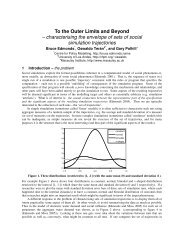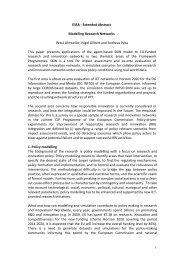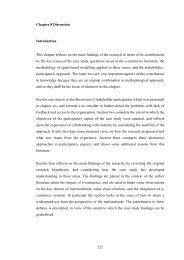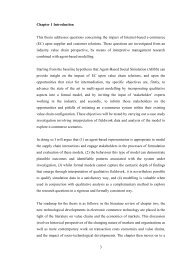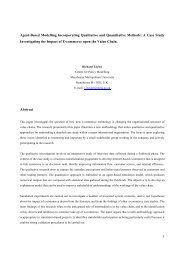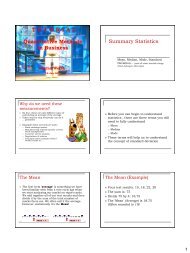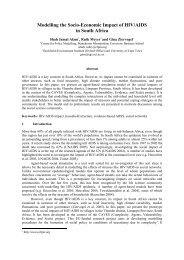7 Chapter 2 Literature Review: Markets, Intermediation and E ...
7 Chapter 2 Literature Review: Markets, Intermediation and E ...
7 Chapter 2 Literature Review: Markets, Intermediation and E ...
Create successful ePaper yourself
Turn your PDF publications into a flip-book with our unique Google optimized e-Paper software.
1999; Marshall, Sor et al. 2000) as markets potentially subject to upheaval.<br />
Particularly anticipated as at risk are those companies involved in facilitating the<br />
information <strong>and</strong> communication h<strong>and</strong>ling requirements of other customers <strong>and</strong><br />
suppliers, where those functions are open to potential improvements through the use<br />
of computer networks. In other words, the functions of intermediaries are under threat<br />
of discontinuity. Other researchers posit competition from Internet-only companies,<br />
the so called ‘cybermediaries’ e.g. (Jin <strong>and</strong> Robey 1999) that may come to dominate.<br />
In this section we examine these claims <strong>and</strong> discuss whether the findings are<br />
consistent with our earlier analysis of changes in the distribution system due to the<br />
introduction of railway, telegraph, <strong>and</strong> other technologies.<br />
In the early stages of development of the Internet, EDI <strong>and</strong> other electronic<br />
networking technologies, researchers argued that we would see much<br />
disintermediation (Malone, Yates et al. 1987) (Tapscott 1996) i.e. traditional<br />
intermediaries would be bypassed in the process of reshaping certain industrial<br />
sectors. More recently, some researchers have started to question whether the<br />
disintermediaton of traditional intermediaries is as universal as was first suggested.<br />
For example, we consider the more sophisticated model of Chircu <strong>and</strong> Kauffman<br />
(2000) who introduce the concept of the intermediation / disintermediation /<br />
reintermediation (IDR) framework which they argue applies to the introduction of<br />
new IT innovations that cause structural adjustments. The idea is that changing market<br />
conditions also bring new opportunities for intermediation to which the threatened<br />
intermediary should adapt, or reintermediate:<br />
“A disenfranchised traditional player is able to compete again by leveraging<br />
technological innovations with cospecialized assets.” (Chircu <strong>and</strong> Kauffman 2000,<br />
pg. 7)<br />
There unquestionably are many new opportunities for intermediaries in the online<br />
commercial environment. An intermediary has access to large amounts of information<br />
<strong>and</strong> is therefore able to augment the range of increasingly sophisticated information<br />
filtering, compiling <strong>and</strong> sorting services that can be provided. The emergence of new<br />
roles of aggregation, trust provision, facilitation, matching, monitoring, <strong>and</strong> integrity<br />
guarantor provide these opportunities. Intermediaries also provide one-stop shopping,<br />
37




